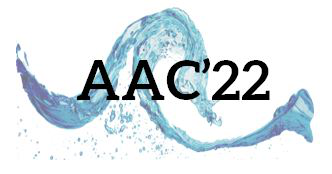Conveners
WGs 2+5 Joint Session: Session 1 of 1
- Yine Sun (Argonne National Laboratory)
- Alexey Arefiev (UC San Diego)
- Samuel Barber (Lawrence Berkeley National Laboratory)
- David Bruhwiler (RadiaSoft LLC)
Description
Joint session between working groups 2 & 5:
WG2 - Computation for Accelerator Physics
WG5 - Beam Sources, Monitoring and Control
Accelerators are moving towards higher repetition rates with extremely high current and brightness beams.
Advanced control techniques using machine learning are required for the optimisation and operation of such accelerators.
These techniques greatly benefit from having single-shot beam measurements.
However, high intensity beams present an issue for conventional diagnostics as they will...
This contribution addresses recent progress in machine learning based diagnostics and optimization at the FACET-II facility at SLAC National Accelerator Laboratory. We focus the discussion around three examples: longitudinal phase space diagnostics [1-2], new algorithms for 20x speedup in optimization of beam emittance, and automated sextupole tuning to reduce minimum spot sizes in the FACET...
Characterizing the phase space distribution of particle beams in accelerators is a central part of accelerator understanding and performance optimization. However, conventional reconstruction-based techniques either use simplifying assumptions or require specialized diagnostics to infer high-dimensional (> 2D) beam properties. In this work, we introduce a general-purpose algorithm that...
Design of circular lattices involves optimizing figures of merit (FoMs) characterizing the beam properties subject to the constraint that the beam distribution function be approximately periodic in trips around the lattice. We are developing an algorithm that accomplishes this with minimal computational effort. The algorithm takes advantage of recent developments in adjoint techniques that...
High-brightness electron photoinjectors and electron linacs are fundamental to many advanced accelerator concepts and associated applications (see e.g., Ref. [1] and references therein). The industrial, medical and homeland security markets for low-to-moderate energy electron linacs are growing rapidly. To meet the design challenges for these divergent applications, with modest software...

